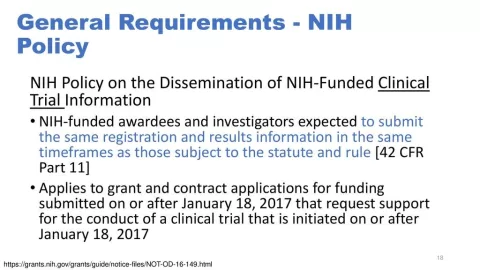COVID-19 fatality rates have emerged as a critical statistic in understanding the pandemic’s impact across different populations. In Hawaii, studies have revealed stark disparities in these rates among ethnic groups, raising concerns about the health outcomes for communities such as Asian Americans and Native Hawaiians. Deciphering the COVID-19 ethnic disparities is essential for addressing the vulnerabilities present in these populations, particularly as vaccination rates improve. The Hawaiian landscape paints a unique picture, where clearly defined hospitalization rates by ethnicity offer insights into the ongoing battle against COVID-19. These statistics not only guide clinical practices but also inform public health strategies aimed at reducing mortality in the most affected groups.
The death rates associated with COVID-19 have garnered significant attention, particularly when examining demographic variances. Racial and ethnic minorities, most notably in regions like Hawaii, have faced heightened risks, as evidenced by detailed analyses of hospitalization trends. A comprehensive review of health outcomes related to this virus highlights the urgency of addressing vaccination impacts, especially among underrepresented communities. Clinicians and public health officials alike must heed the elevated vulnerability displayed by various ethnicities to effectively tailor healthcare initiatives. By delving into detailed statistics, we can better understand and combat the ramifications of this global health crisis.
Understanding COVID-19 Fatality Rates in Hawaii
Hawaii has emerged as a unique case study for analyzing COVID-19 fatality rates, especially due to its diverse population comprising Asian Americans, Native Hawaiians, and Pacific Islanders. The pandemic revealed stark differences in health outcomes among these ethnic groups, with data showing that the fatality rates among Asian and Pacific Islander groups were notably high compared to their White and Black counterparts. Specifically, the study indicated a fatality rate of 15.9% among other Asians and 12.8% among Japanese groups, highlighting a concerning trend of increased risk associated with these populations.
Several factors contribute to these disparities, including underlying health conditions, access to healthcare, and cultural aspects influencing health behaviors. For instance, the significantly higher hospitalization rates for Filipino and Pacific Islander subgroups suggest that socioeconomic factors may affect their ability to seek timely medical assistance. It is essential to understand that these disparities are not merely statistical; they represent real consequences for families and communities across Hawaii, calling for targeted public health measures to address these inequities.
Effective public health responses aimed at reducing COVID-19 fatalities require a deep understanding of the socio-political and economic landscape. The historical underrepresentation of Asian American, Native Hawaiian, and Pacific Islander populations in health studies has limited insights into how COVID-19 impacts these groups specifically. Addressing these gaps is vital for informed policymaking and ensuring that medical resources are allocated to those most at risk.
In addition, increasing awareness of the social determinants of health that disproportionately affect these groups is paramount. As such, it becomes critical for health officials and policymakers to track these statistics closely and recognize the importance of culturally competent healthcare practices. By doing so, there can be a proactive approach in addressing the disparities in COVID-19 fatality rates in Hawaii and beyond.
The Impact of Vaccination on COVID-19 Health Outcomes
Vaccination has proven to be a pivotal factor in mitigating the severity and fatality of COVID-19 infections among various ethnic groups. In the recent data analyzed, unvaccinated patients from all ethnic backgrounds demonstrated significantly higher fatality rates compared to their vaccinated counterparts, underlining the critical role of vaccines in public health strategies. For example, patients with no vaccinations faced a dramatic risk of death, particularly in older age brackets, which reveals the potential of vaccinations to save lives and reduce hospital fatalities across different demographic groups.
Moreover, the data showed an inverse correlation between the number of COVID-19 vaccinations received and the fatality rates, suggesting that comprehensive vaccination campaigns can notably impact health outcomes in high-risk populations. This relationship emphasizes the need for targeted outreach and education to encourage vaccination, especially in communities with lower uptake rates. Public health officials in Hawaii should therefore focus on addressing hesitancy and increasing accessibility to vaccines among ethnic minorities to enhance community resilience against future COVID-19 outbreaks.
In tandem with vaccination, other health measures such as regular screenings and promoting healthy lifestyles are necessary to bolster overall public health. The pandemic has highlighted pre-existing health disparities, making it imperative to also address conditions that may exacerbate COVID-19’s impact, such as diabetes and cardiovascular diseases prevalent in certain ethnic groups. Educating communities about the benefits of vaccination alongside promoting existing health initiatives can lead to a more robust defense against severe COVID-19 health outcomes, ensuring better preparedness for future health crises.
Overall, the evidence emphasizes that vaccination is not merely an individual choice but a collective responsibility, particularly in protecting vulnerable ethnic populations. Therefore, policymakers need to prioritize resources that will increase vaccination rates while simultaneously addressing the broader health disparities present in Hawaii’s diverse population.
Analyzing Hospitalization Rates by Ethnicity During COVID-19
COVID-19 has unveiled a range of disparities in hospitalization rates among different ethnic groups, particularly within Hawaii’s multiethnic society. The data indicates that certain subgroups, notably Filipinos and Pacific Islanders, exhibited higher hospitalization rates, highlighting how social determinants such as employment, housing, and healthcare access play a crucial role in these outcomes. The findings from the study suggest that each ethnic group experiences unique challenges that may contribute to the frequency of hospital admissions during the pandemic.
It is essential to analyze the factors influencing these hospitalization rates further. Some communities may have limited access to healthcare facilities or face challenges related to socioeconomic status, affecting their ability to seek timely medical intervention. Additionally, cultural factors may impact health-seeking behaviors within these ethnic populations, creating barriers that lead to delayed hospital visits during critical periods of illness. Therefore, addressing these systemic issues is fundamental in designing effective public health responses.
In light of these challenges, healthcare providers and public health officials must collaborate closely with community leaders to develop culturally specific outreach programs. These initiatives should focus on educating at-risk populations about COVID-19 symptoms, the importance of early testing, and the potential need for hospitalization. By fostering stronger ties and communication with ethnic communities, it becomes possible to reduce the stigma around seeking medical help and encourage proactive healthcare measures.
In conclusion, understanding the complex interplay between ethnicity and hospitalization rates is vital for enhancing public health strategies. Ensuring equitable healthcare access and promoting preventive measures will be instrumental in addressing the disparities revealed by COVID-19, ultimately leading to better health outcomes across Hawaii’s diverse population.
Research Gaps in COVID-19 Ethnic Disparities
Despite the wealth of data emerging from the COVID-19 pandemic, significant gaps remain in understanding the ramifications of ethnic disparities on health outcomes. The limited research focusing specifically on Asian American, Native Hawaiian, and Pacific Islander populations has hindered the ability to fully comprehend the extent and mechanics of these disparities. Consequently, public health measures may not fully address the unique concerns and barriers faced by these groups.
Moreover, the necessity for sex-disaggregated data is critical to unpacking the complex layers of COVID-19 effects within ethnic groups. Differences in gender roles, access to care, and susceptibility to specific health conditions can all influence disease outcomes. By broadening research initiatives to include a more diverse range of ethnic and gender-based datasets, interventions can be designed that are responsive to the nuanced needs of various demographic groups, which is essential in optimizing healthcare delivery and public health strategies.
The repercussions of these research gaps can perpetuate cycles of inequity and prevent effective interventions from being developed and implemented. As such, it becomes essential for researchers to collaborate with community organizations and advocates to ensure that their studies consider the perspectives and lived experiences of the populations being analyzed. Engaging affected communities not only enriches the research but also fosters trust and collaboration between healthcare systems and those they serve.
Therefore, it is crucial for future studies to prioritize funding that addresses these disparities and promotes comprehensive understanding. An inclusive research approach is necessary for an equitable public health response, particularly as we move towards recovery and beyond the COVID-19 pandemic.
Public Health Strategies to Mitigate COVID-19 Disparities
Effective public health strategies are key to mitigating the disparities revealed during the COVID-19 pandemic, particularly for ethnic minority groups. In addressing the complex factors that contribute to higher fatality and hospitalization rates, tailor-made interventions need to be prioritized to reach at-risk communities effectively. Initiatives focusing on culturally competent care, increased vaccination accessibility, and the education of healthcare providers about ethnic disparities will enhance health outcomes.
Furthermore, community engagement is essential in the design and implementation of these strategies. Utilizing community health workers who understand the cultural contexts and experiences of targeted populations can substantially improve outreach efforts. By establishing trust within the community and incorporating feedback, public health campaigns can be modified to more effectively address the challenges faced by these groups. Collaboration with local organizations can lead to the development of resources that resonate with community members, increasing participation in health initiatives.
Another integral aspect of mitigating disparities involves continuous monitoring and evaluation of health outcomes post-intervention. Public health officials must be equipped to collect and analyze data on ethnic disparities accurately, adapting strategies as needed based on observed outcomes. By implementing a framework for adaptive public health response, Hawaii can work towards a more equitable healthcare system that serves its diverse population.
Ultimately, addressing the public health disparities laid bare by the COVID-19 pandemic requires a multifaceted approach that engages all stakeholders, from policymakers to community members. With a commitment to equity and inclusion, it is possible to foster a healthier future for everyone in Hawaii, laying the foundation for resilience in the face of ongoing and future health challenges.
Frequently Asked Questions
What are the main factors influencing COVID-19 fatality rates among different ethnic groups?
COVID-19 fatality rates among ethnic groups are primarily influenced by age, vaccination status, and health assessments like the SOFA score. Research indicates that older patients and those with fewer vaccinations experience higher fatality rates. In Hawaii, disparities were noted, with higher rates among Asian and Pacific Islander populations.
How do COVID-19 fatality rates compare among racial and ethnic groups in Hawaii?
In Hawaii, COVID-19 fatality rates varied significantly among ethnic groups. For example, fatality rates were notably high among the other Asian (15.9%), Chinese (15.8%), and Japanese (12.8%) populations in comparison to Black (4.8%) and White (8.3%) groups. These disparities underscore the need for tailored health strategies to address these differences.
What is the impact of COVID-19 vaccinations on fatality rates across different ethnicities?
COVID-19 vaccinations have a profound impact on fatality rates, with unvaccinated patients facing significantly higher risks. Across all ethnicities, vaccinated individuals had notably lower fatality rates compared to their unvaccinated counterparts. This highlights the importance of vaccination in reducing COVID-19-related deaths.
How do hospitalization rates by ethnicity relate to COVID-19 fatality rates?
Hospitalization rates by ethnicity correlate closely with COVID-19 fatality rates, with minority groups such as Filipinos and Pacific Islanders reporting higher hospitalization and death rates. This relationship emphasizes the need for targeted interventions to support these populations at greater risk.
What role do age and SOFA scores play in determining COVID-19 fatality rates in ethnic groups?
Age and SOFA scores are critical in determining COVID-19 fatality rates among ethnic groups. Older patients and those with higher SOFA scores at admission experienced higher fatality rates. These factors are essential for clinicians to consider when treating COVID-19 patients from diverse ethnic backgrounds.
Are COVID-19 health outcomes consistent among all ethnic groups?
No, COVID-19 health outcomes are not consistent among all ethnic groups. Research indicates significant disparities, particularly among Asian and Pacific Islander populations, who have experienced higher fatality rates. Understanding these differences is vital for effective health response strategies.
What are the broader implications of COVID-19 ethnic disparities on public health policy?
The existence of COVID-19 ethnic disparities in fatality rates has significant implications for public health policy. It highlights the need for targeted healthcare interventions, resource allocation, and community engagement strategies that address the unique needs of vulnerable populations to improve health outcomes.
| Key Factors | Findings | Implications |
|---|---|---|
| Population Groups | Asian American, Native Hawaiian, and Pacific Islander | Underrepresented in COVID-19 outcome studies. |
| Fatality Rates | Overall fatality rate: 11.1% | Highlighting health disparities among ethnic groups. |
| Specific Group Rates | Higher rates observed in: Other Asian (15.9%), Chinese (15.8%), Japanese (12.8%) | Need for tailored healthcare and interventions for diverse groups. |
| Impact of Vaccination | Unvaccinated patients had significantly higher fatality rates. | Importance of vaccination in reducing COVID-19 mortality. |
| Age Correlation | Older age correlated with increased fatality rates across all groups. | Age-specific strategies needed to address risks. |
| SOFA Scores Impact | Higher SOFA scores linked to increased fatalities. | SOFA assessments can guide clinical decision-making. |
Summary
COVID-19 fatality rates have exhibited notable variations among different ethnic groups, particularly in Hawaii, based on a study conducted from 2020 to 2022. The research underscores the importance of addressing these disparities through focused healthcare strategies, especially for Asian American, Native Hawaiian, and Pacific Islander populations. Recognizing and understanding the associations between age, SOFA score, and vaccination status is crucial in mitigating the risks and improving outcomes during ongoing public health challenges.
The content provided on this blog (e.g., symptom descriptions, health tips, or general advice) is for informational purposes only and is not a substitute for professional medical advice, diagnosis, or treatment. Always seek the guidance of your physician or other qualified healthcare provider with any questions you may have regarding a medical condition. Never disregard professional medical advice or delay seeking it because of something you have read on this website. If you believe you may have a medical emergency, call your doctor or emergency services immediately. Reliance on any information provided by this blog is solely at your own risk.








